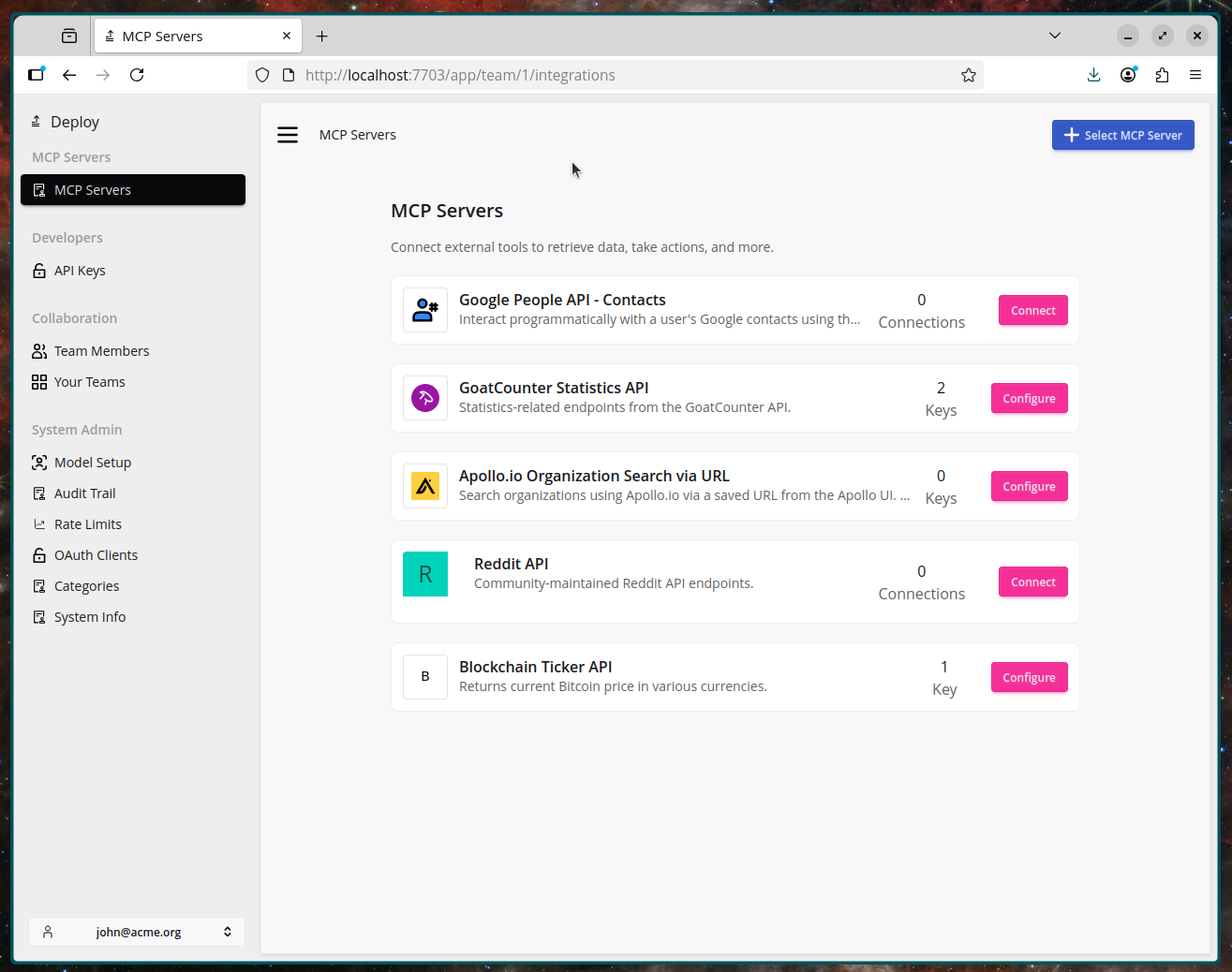Transform your Legacy Enterprise Systems with Agentic AI

We now have the technology to connect LLMs to Enterprise Systems
The Model Context Protocol (MCP) allows large, regulated organizations to safely connect the systems they already rely on to a governed, auditable AI assistant — without changing permissions, ownership, or governance models. Each user continues to operate strictly within their existing entitlements, and every action is fully logged.

This pattern applies across industries:
- Financial Services: trade amendments, risk checks, client onboarding
- Healthcare: prior auth, claims resolution, clinical summaries
- Manufacturing: maintenance requests, inventory queries, production scheduling
This Leads To...
- Simpler workflows: teams move through one guided chat instead of juggling a patchwork of consoles and green screens.
- Reduced dependence on institutional expertise: processes become explicit, documented, and repeatable.
- Stronger oversight: every tool call is logged, routed through the same approval queue, and can be replayed when auditors or safety teams need proof.

Running a Pilot or Proof of Concept
Start by identifying where your systems already expose stable contracts — OpenAPI specs, service endpoints, internal gateways, or batch interfaces. These become the source of truth the assistant relies on.
1. Mapping out existing systems
Here we'll demonstrate a possible Proof of Concept using Open API specifications.

This gives us the following benefits:
- Shared artifact for architecture, security, and compliance review
- Auto-generated docs, SDKs, and contract tests
- Clear blast radius before anything touches production data
OpenAPI specs provide the contract agents rely on.

2. Turning Specifications into MCP Servers
Once the interface is defined, it can be fed into Deploy and published as an MCP tool inside your controlled environment.
- Attach metadata: owners, environment boundaries, data classification
- Apply standard controls: RBAC, logging, throttling, approvals
- No change to the underlying system — only the interface layer

3. Connecting a Chat UI
With the MCP server registered, a chat interface becomes the front door.
- Prompts resolve into structured tool calls with guardrails
- The assistant summarizes results and asks for confirmation when needed
- Operators approve or deny actions with clear visibility into what will run
With the specs and tools published, a chat surface becomes the control plane.

The future is the console
A chat interface becomes the front door to enterprise systems. Users describe the outcome; the model coordinates the necessary tools, systems, and approvals.
- Natural language becomes the request layer
- Tool calls become the execution layer
- Logging and governance remain consistent and centralized
Conversation becomes the API.
